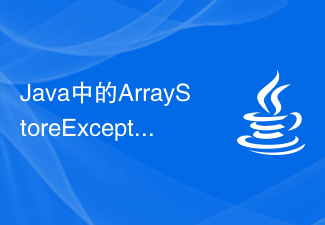We often add custom extension functions to the prototypes of String, Function, and Array, such as removing string spaces, sorting arrays, etc.
Today we will focus on how to extend the Array object
1. Expand directly on Array.prototype
2. Use your own method to extend the array object
Expand directly on Array.prototype, it cannot be used directly on DOM objects (such as: nodeList obtained by document.getElementsByTagName('div'));
For those with mysophobia For students, it has also broken the original ecological environment: )
Let’s first look at some methods of yui operating arrays. Here I simply stripped and changed the source code
(function(){
var YArray;
YArray = function(o,idx,arraylike){
var t = (arraylike) ? 2 : YArray.test(o),
l, a, start = idx || 0;
if (t) {
try {
return Array .prototype.slice.call(o, start); //Use Array native method to convert atoms into JS array
} catch(e) {
a = [];
l = o.length;
for (; start< ;l; start++) {
a.push(o[start]);
}
return a;
}
} else {
return [o];
}
}
YArray.test = function(o) {
var r = 0;
if (o && (typeof o == 'object' ||typeof o == 'function')) {
if (Object.prototype.toString.call(o) === "[ object Array]") {
r = 1;
} else {
try {
if (('length' in o) && !o.tagName && !o.alert && !o.apply) {
r = 2;
}
} catch(e) {}
}
}
return r;
}
YArray.each = (Array.prototype.forEach) ? //First check whether the browser supports it, and if so, call the native
function (a, f, o) {
Array.prototype.forEach.call(a || [], f, o || Y);
return YArray;
} :
function (a, f, o) {
var l = (a && a.length) || 0, i;
for (i = 0; i f.call(o || Y, a[i], i, a);
}
return YArray;
};
YArray.hash = function(k, v) {
var o = {}, l = k.length, vl = v && v.length, i;
for (i=0; i
o[k[i]] = (vl && vl > i) ? v[i] : true;
}
}
return o;
};
YArray.indexOf = (Array.prototype.indexOf) ?
function(a, val) {
return Array.prototype.indexOf.call(a, val) ;
} :
function(a, val) {
for (var i=0; i
return i;
}
}
return -1; //Cannot be found
};
YArray.numericSort = function(a, b) {
return (a - b); //Sort from small to large, return (b - a); From large to small
};
YArray.some = (Array.prototype.some) ?
function (a, f, o) {
return Array.prototype.some.call(a, f, o );
} :
function (a, f, o) {
var l = a.length, i;
for (i=0; i
return true;
}
}
return false;
};
})();
Use the Array native method to convert aguments into other JS arrays Methods (Dom objects are not allowed, only traversal)
Array.apply(null,arguments);
[].slice.call(arguments,0);
[].splice.call(arguments,0,arguments .length);
[].concat.apply([],arguments);
...
The YArray function can not only operate on array objects but also on nodeList objects
YArray(document.getElementsByTagName("div "));
Traverse the DOM object and reassemble it into an array: )
a = [];
l = o.length;
for (; start
}
return a;
YArray.each
Traverse the array, if there is a function passed in, callback will be executed for each traversal
YArray.each([1,2,3] ,function(item){
alert(item);// Executed 3 times, 1,2,3
});
YArray.hash
The array is assembled into key-value pairs and can be understood as a json object
YArray.hash(["a","b"],[1,2]);
YArray.indexOf
Returns (want to find a value) the same index value of the value in the array
YArray.indexOf([ 1,2],1)
YArray.numericSort
Sort the array from small to large
[3, 1, 2].sort(YArray.numericSort);
YArray.some
Whether any elements in the array pass callBack processing? If there is one, it will return true immediately. If there is none, it will return false
YArray.some([3, 1, 2], function(el){
return el })
Let’s look at the javascript 1.6 -1.8 extensions to arrays and learn how to implement the same functionality
every
filter
forEach
indexOf
lastIndexOf
map
some
reduce
reduceRight
Array.prototype.every
if (!Array.prototype.every)
{
Array.prototype.every = function(fun /*, thisp*/)
{
var len = this.length >>> 0;
if (typeof fun != "function")
throw new TypeError();
var thisp = arguments[1];
for (var i = 0; i {
if (i in this &&
!fun.call(thisp, this[i], i, this))
return false;
}
return true;
};
}
Has every element in the array been processed by callBack? If it is, it returns true. If one of them is not, it returns false immediately. This is very similar to the YUI some function we just mentioned:) The function is exactly the opposite. Array.prototype.filter
Array. prototype.filter = function (block /*, thisp */) { //Filter, easy to add, for judgment and filtering
var values = [];
for (var i = 0; i if (block.call(thisp, this[i]))
values.push(this[i]);
return values;
};
Usage
var val= numbers.filter(function(t){
return t })
alert(val);
forEach and indexOf and some can refer to the yui code above, no Let’s reiterate again
lastIndexOf and indexOf codes are similar, just traverse from the end
Now let’s talk about ‘map’
Array.prototype.map = function(fun /*, thisp*/) {
var len = this. length >>> 0;
throw new TypeError();
var res = new Array(len);
var thisp = arguments[1];
for (var i = 0; i if (i in this)
res[i] = fun.call(thisp, this[i], i, this);
}
return res;
};
Traverse the array, execute the function, iterate the array, each element is used as a parameter to execute the callBack method, the callBack method processes each element, and finally returns a processed array
var numbers = [1, 4, 9 ];
Array.prototype.reduce
Array.prototype.reduce = function(fun /*, initial*/) {
var len = this.length >>> 0;
throw new TypeError();
if (len == 0 && arguments.length == 1)
throw new TypeError();
var i = 0;
if (arguments.length >= 2) {
var rv = arguments[1];
} else {
do {
if (i in this) {
rv = this[i++];
break;
}
if (++i >= len)
throw new TypeError();
} while (true);
}
for (; i if (i in this)
rv = fun.call(null, rv, this[i], i, this);
}
return rv;
};
Let the array elements call the given function in sequence , and finally returns a value. In other words, the given function must use the return value
It means the name, from right to left
Array.prototype.reduceRight = function(fun /*, initial*/) {
var len = this.length >>> 0;
throw new TypeError();
if (len == 0 && arguments.length = = 1)
throw new TypeError();
var i = len - 1;
if (arguments.length >= 2) {
var rv = arguments[1];
} else {
do {
if (i in this) {
rv = this[i--];
break;
}
if (--i throw new TypeError();
} while (true);
}
for (; i >= 0; i--) {
if (i in this)
rv = fun.call(null, rv, this[i], i, this);
}
return rv;
};
In addition to these, any method you want to use can be added to Array.prototype
For example, the commonly used toString
Array.prototype.toString = function () {
return this.join('');
You can also add toJson, uniq, compact, reverse, etc.
 使用C#中的Array.Sort函数对数组进行排序Nov 18, 2023 am 10:37 AM
使用C#中的Array.Sort函数对数组进行排序Nov 18, 2023 am 10:37 AM标题:C#中使用Array.Sort函数对数组进行排序的示例正文:在C#中,数组是一种常用的数据结构,经常需要对数组进行排序操作。C#提供了Array类,其中有Sort方法可以方便地对数组进行排序。本文将演示如何使用C#中的Array.Sort函数对数组进行排序,并提供具体的代码示例。首先,我们需要了解一下Array.Sort函数的基本用法。Array.So
 简单明了的PHP array_merge_recursive()函数使用方法Jun 27, 2023 pm 01:48 PM
简单明了的PHP array_merge_recursive()函数使用方法Jun 27, 2023 pm 01:48 PM在进行PHP编程时,我们常常需要对数组进行合并。PHP提供了array_merge()函数来完成数组合并的工作,不过当数组中存在相同的键时,该函数会覆盖原有的值。为了解决这个问题,PHP在语言中还提供了一个array_merge_recursive()函数,该函数可以合并数组并保留相同键的值,使得程序的设计变得更加灵活。array_merge
 如何使用PHP中的array_combine函数将两个数组拼成关联数组Jun 26, 2023 pm 01:41 PM
如何使用PHP中的array_combine函数将两个数组拼成关联数组Jun 26, 2023 pm 01:41 PM在PHP中,有许多强大的数组函数可以使数组的操作更加方便和快捷。当我们需要将两个数组拼成一个关联数组时,可以使用PHP的array_combine函数来实现这一操作。这个函数实际上是用来将一个数组的键作为另一个数组的值,合并成一个新的关联数组。接下来,我们将会讲解如何使用PHP中的array_combine函数将两个数组拼成关联数组。了解array_comb
 PHP array_fill()函数用法详解Jun 27, 2023 am 08:42 AM
PHP array_fill()函数用法详解Jun 27, 2023 am 08:42 AM在PHP编程中,数组是一种非常重要的数据结构,能够轻松地处理大量数据。PHP中提供了许多数组相关的函数,array_fill()就是其中之一。本篇文章将详细介绍array_fill()函数的用法,以及在实际应用中的一些技巧。一、array_fill()函数概述array_fill()函数的作用是创建一个指定长度的、由相同的值组成的数组。具体来说,该函数的语法
 Python中的Array模块怎么使用May 01, 2023 am 09:13 AM
Python中的Array模块怎么使用May 01, 2023 am 09:13 AMPython中的array模块是一个预定义的数组,因此其在内存中占用的空间比标准列表小得多,同时也可以执行快速的元素级别操作,例如添加、删除、索引和切片等操作。此外,数组中的所有元素都是同一种类型,因此可以使用数组提供的高效数值运算函数,例如计算平均值、最大值和最小值等。另外,array模块还支持将数组对象直接写入和读取到二进制文件中,这使得在处理大量数值数据时更加高效。因此,如果您需要处理大量同质数据,可以考虑使用Python的array模块来优化代码的执行效率。要使用array模块,首先需要
 Java中的ArrayStoreException异常的常见原因是什么?Jun 25, 2023 am 09:48 AM
Java中的ArrayStoreException异常的常见原因是什么?Jun 25, 2023 am 09:48 AM在Java编程中,数组是一种重要的数据结构。数组可以在一个变量中存储多个值,更重要的是可以使用索引访问每个值。但是在使用数组时,可能会出现一些异常,其中之一是ArrayStoreException。本文将讨论ArrayStoreException异常的常见原因。1.类型不匹配数组在创建时必须指定元素类型。当我们试图将不兼容的数据类型存储到一个数组中时,就会抛
 Java中的ArrayIndexOutOfBoundsException异常常见原因是什么?Jun 24, 2023 pm 10:39 PM
Java中的ArrayIndexOutOfBoundsException异常常见原因是什么?Jun 24, 2023 pm 10:39 PMJava是一种非常强大的编程语言,广泛应用于各种开发领域。但是,在Java编程过程中,开发人员经常会遇到ArrayIndexOutOfBoundsException异常。那么,这个异常的常见原因是什么呢?ArrayIndexOutOfBoundsException是Java中常见的一个运行时异常。它表示在访问数据时,数组下标超出了数组的范围。常见的原因包括以
 PHP array_change_key_case()函数使用方法介绍Jun 27, 2023 am 10:43 AM
PHP array_change_key_case()函数使用方法介绍Jun 27, 2023 am 10:43 AM在PHP编程中,数组是一个经常用到的数据类型。而关于数组的操作函数也是相当多的,其中包括了array_change_key_case()函数。该函数可以将数组中键名的大小写进行转换,从而方便我们进行数据的处理。本文就来介绍一下PHP中array_change_key_case()函数的使用方法。一、函数语法及参数array_change_ke


Hot AI Tools

Undresser.AI Undress
AI-powered app for creating realistic nude photos

AI Clothes Remover
Online AI tool for removing clothes from photos.

Undress AI Tool
Undress images for free

Clothoff.io
AI clothes remover

AI Hentai Generator
Generate AI Hentai for free.

Hot Article

Hot Tools

Dreamweaver CS6
Visual web development tools

DVWA
Damn Vulnerable Web App (DVWA) is a PHP/MySQL web application that is very vulnerable. Its main goals are to be an aid for security professionals to test their skills and tools in a legal environment, to help web developers better understand the process of securing web applications, and to help teachers/students teach/learn in a classroom environment Web application security. The goal of DVWA is to practice some of the most common web vulnerabilities through a simple and straightforward interface, with varying degrees of difficulty. Please note that this software

WebStorm Mac version
Useful JavaScript development tools

Atom editor mac version download
The most popular open source editor

MinGW - Minimalist GNU for Windows
This project is in the process of being migrated to osdn.net/projects/mingw, you can continue to follow us there. MinGW: A native Windows port of the GNU Compiler Collection (GCC), freely distributable import libraries and header files for building native Windows applications; includes extensions to the MSVC runtime to support C99 functionality. All MinGW software can run on 64-bit Windows platforms.






